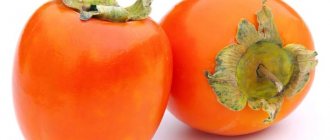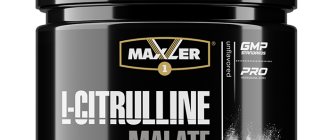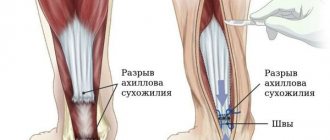How does sugar affect the body?
Carbohydrates are the main source of energy in the body and must be included in the diet. The effect of these organic substances on the human body is similar to the effect of fuel for a car: without them, a person is lethargic, he feels tired and hungry. Athletes need to consume large amounts of carbohydrates for endurance and recovery. Another question is that carbohydrates are different - simple and complex. The former are absorbed faster and release energy, and sugar belongs to this type of substance.
So, sugar is a product of organic origin, a simple (fast) type of carbohydrate. The simple components of sugar are monosaccharides - glucose, sucrose, fructose. Once in the body, the product is quickly broken down, releasing energy, and a person, having barely eaten the candy, immediately feels a surge of strength, vigor, and his mood improves. For athletes and people experiencing intense physical activity, sweets are an opportunity to quickly restore spent energy. It takes longer to break down complex carbohydrates that do not have a sweet taste (cereals, pasta, bread).
However, there is also another side to the coin. Sugar is a fast carbohydrate. The free energy obtained from eating sweets is consumed very quickly, its reserves dry up in 30-40 minutes. If during this time the energy reserves are not used, i.e. calories are not burned, they turn into fat, which settles in the most problematic areas.
Another dangerous point is a sharp jump in insulin when consuming excess sugar. Regular such “shocks” for the body can lead to the development of a serious disease – type 2 diabetes, which is in 4th place on the list of causes of death.
So, sugar is a healthy product and necessary for the smooth functioning of the body, but it is necessary to use it wisely. Sweets will not cause harm only if they are consumed in the right quantities and combined with active physical activity, including sports.
What half of the day is best to eat sweets?
Since early childhood, we have been taught that eating sweets can cause harm to the body. However, this makes sense when eating too many sweet foods, and if you eat such foods correctly and in moderation, you can also benefit from them.
However, there is no unanimous opinion regarding what half of the day to eat dessert in order to get the maximum benefit from it. Some people believe that it is best to eat sweets in the morning. Others, on the contrary, recommend not to do this.
Let's look at the arguments that justify why you can eat sweets in the morning:
- In the first half of the day, human metabolism is at its maximum, which allows you to quickly digest high-calorie foods.
- The calories you eat will be spent throughout the coming day and will not be deposited as excess weight on your waist.
- A sweet breakfast will help protect against overeating, since carbohydrates are quickly absorbed and send a signal to the human brain about satiety.
- A morning dessert can put you in a good mood and activate brain activity for the entire working day, this is confirmed by reviews from lovers of tasty treats.
Is it possible to eat sweets before training?
Most people go in for sports in order to get rid of excess fat deposits. It would seem that under such conditions it is better to give up simple carbohydrates. However, during heavy physical activity - in bodybuilding, weightlifting, for example, as well as during long training - the body needs to quickly recover. In such a situation, simple carbohydrates perform the following functions:
- stimulate the production of insulin, which increases anabolic levels;
- quickly replenish expended energy;
- protect muscles from destruction;
- promote the production of the “hormone of happiness”;
- accelerate the burning of fatty acids.
You can eat sweets before training if you have to perform long exercises - 35-40 minutes of sports. In this case, an hour and a half before the start of training, you can consume simple carbohydrates in small quantities, about 15-20 g per serving - for example, enjoy one sweet apple, a spoonful of honey or a small piece of chocolate, or drink a glass of freshly squeezed juice. Some trainers recommend eating sweets immediately before training, citing the fact that then the calories will be completely consumed during exercise, but doctors do not agree with this approach: any food must have time to be absorbed in order for it to be beneficial.
The main thing is to count the calories of the foods you eat and know how much is consumed on average during the period of exercise. If the first indicator exceeds the calories burned, the amount of sweets before training should be reduced.
Reasons why you should give up sweets in the morning
Let's look at the arguments that justify why you shouldn't eat sweets in the morning:
- Dessert will not be able to provide a sufficient energy supply to the human body for the upcoming part of the working day, since fast carbohydrates tend to be consumed instantly.
- Sweets are not suitable for a separate meal, which contradicts the following rule: “Sweets should not be consumed with other foods during the same meal.”
- An early dessert can push you to overeat during the day, since tasty treats provoke a sharp jump in insulin.
Is it possible to eat sweets after training?
Approximately 35-40 minutes after strength training, a “carbohydrate window” opens in the body. At this time, the absorption of carbohydrates occurs twice as actively as during sports, and it is during this period that it is necessary to replenish the reserves of glycogen spent by the muscles - the main reserve carbohydrate that is stored in the muscles. With a sharp drop in blood glucose levels, the body begins to intensively consume muscle glycogen, which reduces muscle building exercises to zero. In addition, during training, stress hormones – cortisol and adrenaline – “work”, which increase activity and endurance. And after its completion, their action must be blocked - insulin will handle this.
So, after training, you can eat something sweet. Slow carbohydrates do not work here: by the time they are digested, the body will already draw on muscle glycogen. In addition, insulin helps the absorption of amino acids. After intense sports exercises, you can consume 30-60 g of carbohydrates without harm to the body. This could be a few juicy berries, dried apricots, a piece of chocolate or marshmallows. The main thing is without fanaticism!
Is there any benefit
If you enjoy sweets a little and not every day, even before bed they can benefit the body. For example, increase the level of serotonin in the blood, relieving the worries that have accumulated during the day, preventing you from falling asleep peacefully. And also feed your brain cells with glucose if you need to finish things late in the evening that cannot be put off until the morning.
Brain activity noticeably decreases if the sugar obtained from food during the day is not enough to support brain function.
Therefore, when you have to finish a work report or study for an exam before going to bed, a small dessert will come in handy. And it is doubly useful for women to treat themselves to something sweet from time to time, because carbohydrates replenish the reserves of estrogen - the hormone of beauty and youth.
Is it possible to eat sweets during training?
Yes, especially if the exercise requires intense cardio. For example, cyclists consume sweets throughout almost the entire distance, and yet there are no overweight people among them. To replenish glucose reserves, it is better to choose foods that contain, in addition to sugar, other beneficial substances and are not rich in fat.
Carbohydrates consumed during training are energy that will be used up here and now. The maximum sweet that the body can process during sports activities is 50-60 grams. If you eat protein in addition to carbohydrates, 30 grams of sweets will be enough. This could be a sweetened sports drink, berries, a carbohydrate bar, or yogurt.
Pleasure is timeless
A bonus for those who want to eat tiramisu and not gain weight without looking at the clock. Eating sweets before a physical activity session “neutralizes” the effects of dessert.
Planning a long shopping trip? Feel free to snack on a piece of chocolate. You will burn all the calories on the way. And if you go to the gym, remember that the effect of training after sweet doping will be lower. But the mood is higher.
Desserts will become a weight-loss person's best friend if you know when to eat sweets so as not to gain weight. By following these recommendations, you can not deny yourself a piece of the pie.
Source
TOP 10 sweets for athletes
The body needs carbohydrates after intense physical activity - this is undeniable. However, when deciding which sweet to prefer to restore balance, you need to rely, first of all, on the usefulness and composition of the product. If the treat does not contain anything other than sugar - for example, lollipops, chocolates - it is better to refuse them. Do not pay attention to sweets that are rich in fat - cakes, pastries, creams, ice cream, cream-based desserts.
What simple carbohydrates are most beneficial for the body? We present to you the TOP 10 sweets that athletes can and should eat.
- Honey.
A storehouse of vitamins, amino acids, minerals. The calorie content is equal to sugar, and the benefits are immeasurably greater. Flavonoids and essential oils help strengthen the immune system, improve digestion, and speed up metabolism. - Fresh fruits and berries.
In their raw form, these products are leaders in the content of nutrients. Apples are especially useful as a source of fiber; pomegranate and cherry, which increase hemoglobin; Apricots and persimmons are sources of dietary fiber that promote smooth intestinal function. - Dried fruits.
An excellent remedy for strengthening the heart muscle. Prunes, dried apricots, dates are the healthiest “carbohydrate” snack. However, the calorie content of these products is higher than that of fresh fruits due to the lack of water. As a result, the calorie content is higher than in ordinary fruits. Therefore, you should not abuse these products despite all their positive properties! - Paste.
This product should not be white and airy, but dark and viscous. The latter contains more dietary fiber, which promotes good digestion and a longer feeling of fullness. The unique property of marshmallow is to neutralize the effects of heavy metals on the body. - Black chocolate.
A source of polyunsaturated fatty acids, including linoleic acid, a healthy Omega-3 acid. The product regulates blood pressure, strengthens blood vessels, increases performance and improves mood, promoting the production of “happiness hormones”. The recommended dose is no more than ¼ tile per day. - Candied fruit.
They replenish the body with ascorbic acid, beta-carotene, tocopherol - antioxidants necessary for the normal functioning of the body. Relieve fatigue and restore performance without storing extra calories. - Marshmallow.
One of the most popular products among people trying to lose weight and not having the strength to give up sweets. And this is not without reason: marshmallows contain few calories, but are a source of iron, phosphorus and protein - athletes are delighted! - Halva.
The number of calories in the product is high, but the content of vitamins A, B, E, proteins, and the rejuvenating effect of halva on the body is the reason why it should be preferred to other sweet foods. - Jam.
The beneficial properties of the product are especially evident when it is boiled for no more than 5 minutes with a minimum amount of sugar. The healthiest jams for athletes are nut, raspberry and dogwood. - Marmalade.
Pectin, which gives the sweetness a gelled form, lowers cholesterol levels and prevents joint destruction.
Let's summarize. There are no sweets that are particularly “harmful” for humans, and the body’s need for fast carbohydrates is just as high as for slow ones. You just need to choose the right sweets and eat them in reasonable quantities. To do this, you need to know your daily calorie needs. Give preference to healthy sweets, only occasionally indulging yourself with your favorite delicacy.
How to lose weight without denying yourself pleasure?
Most people associate weight loss with certain dietary restrictions, but for many, giving up their eating habits is so difficult that it is sometimes impossible.
However, some women in their reviews claim that it is still possible to lose weight without denying yourself sweet foods. To do this, you need to follow a few simple rules:
- You should eat this food only before lunch. You can have sweets in the morning, because this gives a high probability that the calories received will be spent throughout the day.
- Do not eat sweets in the evening, and treats are especially strictly prohibited 3-4 hours before bedtime.
- Harmful treats can be replaced with healthier foods - fruits, berries, marmalade, candies, marshmallows, dried fruits, honey, jelly.
- Avoid high-calorie and fatty sweets (cakes, pastries), as these products provoke excess weight gain.
- Do not eat sweets and fatty foods at the same meal, so it is better to avoid dessert after the main course. It is recommended that the break between consumption of these products be at least 2 hours.
- Do not overeat: if you follow moderation, you can eat almost all foods. Accordingly, it is better not to eat a lot of sweets in the morning.
- It is better to get rid of the habit of drinking, especially sweetened drinks, as they supply the body with unnecessary carbohydrates and lead to excess weight gain.
- Artificial sweeteners and sweeteners should be avoided immediately. They not only do not contribute to weight loss, but are also dangerous to health.
- The best way to burn calories after eating dessert is movement.
LiveInternetLiveInternet
Monday, July 22, 2021 12:02 + to quote book
We tell you what time of day is best to eat dessert. And which of them are most beneficial for health and figure.
A lot of sweets is bad for your health in general, and your figure in particular. But giving up dessert completely is also not good. All the same, the desire to eat something sweet will overpower you, and you will break your diet. Then guilt, depression, eating problems - a vicious circle. Therefore, it is better to still allow yourself sweets. But at the right time. Anna Ivashkevich, nutritionist, clinical psychologist-dietitian, member of the National Association of Clinical Nutrition, told AiF.ru about the best time to eat a small dessert:
You can often hear recommendations to eat sweets in the morning. Following them, many people on a diet include sweets in their morning meals. But the fact is that not everyone always wants to eat in the morning, and certainly doesn’t want dessert. Nevertheless, a person eats dessert, because he loves sweets, and in the morning he can.
I usually crave something sweet in the evening. We are tired, sometimes upset, sweets can quickly restore strength and raise blood sugar levels. We come home and think: okay, today I’ll allow myself dessert, but tomorrow everything will definitely be different.
I recommend eating sweets in the afternoon, during the time window from 15.30 to 17.00. On the one hand, it is at this time that the production of cortisol, the stress hormone that pushes us to action, begins to decline. On the other hand, it is already evening, and the gradual production of melatonin, the sleep hormone, begins. In summer it is not too noticeable, now the days are long, but in autumn and winter it starts to get dark early.
Almost every one of us is familiar with the phenomenon of daytime sleepiness, when in the middle of the day you begin to nod off, you don’t want to do anything, but you want things to go on as usual, and no one bothers you. Even if you had lunch early, at 1 p.m., for example, you might notice that sleep is coming later (if you haven’t overeaten, of course).
This is due to insufficient production of cortisol and melatonin.
At this time, it’s a good idea to support yourself with a large cup of green tea or coffee, and eat a small portion of something sweet. Tea or coffee will give you energy, and serotonin, the pleasure hormone, will begin to be produced.
For dessert, you can eat a piece of chocolate, preferably no more than 20 grams, a light dessert such as marshmallows or marshmallows, sweet fruits or berries - anything that provides glucose or fructose, but not creamy fatty desserts, because with them you will get a mixture of carbohydrates and saturated fats, harmful to health and figure.
As a result of such an afternoon snack, you will satisfy the desire to eat dessert, and by the evening the feeling of satisfaction will not have time to evaporate, so the likelihood of a breakdown in sweets from fatigue decreases.
This is another reason - psychological. Physiological, let me remind you, is to support yourself in conditions of lack of cortisol and melatonin production.
Introducing light dessert recipes:
Strawberry panna cotta with vegetable milk
Recipe by Svetlana Makarenko and Anton Patankin, pastry chef and chef of the JOY restaurant (Rostov-on-Don)
- 100 ml coconut milk
- 150 ml soy milk
- 2 g vanillin
- 5 g gelatin
- 100 g sugar
- 150 g strawberry puree
Step 1. Make the sauce: combine strawberry puree and half the sugar and bring to a boil, simmer for 2-3 minutes.
Step 2. Mix soy and coconut milk, remaining sugar and vanilla, bring to a boil.
Step 3. Add gelatin and beat with a blender.
Step 4. Pour into glasses. Place in the refrigerator until hardened.
Step 5. Pour strawberry sauce over the frozen panna cotta and decorate with berries and mint.
Homemade fermented baked milk sorbet with strawberries
Recipe by Semyon Nutels, chef at SimpleWine&Kitchen restaurant
- 1 l ryazhenka
- 8 egg yolks
- 120 g sugar
- 50 ml lemon juice
- 2 sheets of gelatin
- 5 g agar-agar
- Strawberries and strawberries for serving
Step 1. Mix the yolks with fermented baked milk and heat to a temperature of 78 degrees, stirring constantly.
Step 2. Add 2 sheets of gelatin, agar-agar stabilizer, sugar and lemon juice to the mixture.
Step 3. Stir until the sugar dissolves and the mixture becomes homogeneous.
Step 4. Pour the mixture into a container for freezing and put it in the freezer for 2-3 hours. Then beat the mixture with a blender.
Step 5. To serve, form ice cream balls with a special spoon, garnish with fresh strawberries and strawberry pieces.
Mango-passion fruit mousse
The author of the recipe is Zhang Xiancheng, chef of the “Chinese Letter” restaurants. Bar and Food"
- 50 g chocolate
- Sprig of mint
For the biscuit:
- 1 egg
- 25 g flour
- 30 g sugar
- Vanillin
For the mousse:
- 50 g mango puree
- 50 g passion fruit puree
- 100 ml heavy cream
- 10 g sugar
- 8 g gelatin
For the sauce:
- 20 g manco puree
- 20 g mango slices
Step 1. Make a sponge cake: very carefully, trying not to get the yolk into the white, separate the egg. Set the white aside and add half the sugar and vanilla to the yolk.
Step 2. With a mixer at maximum speed, beat the yolk for 5 minutes until a very dense and light mass is obtained.
Step 3. Beat the egg whites, add the remaining sugar, and beat until stiff peaks form.
Step 4. Combine the white with the yolk, add flour and knead the dough, pour into a mold and bake in an oven preheated to 180 degrees for 30 minutes. Cool the biscuit.
Step 5. Make mango sauce: mix mango puree with mango pulp pieces.
Step 6. Make the mousse: heat part of the mango and passion fruit puree in a gravy boat with sugar until the sugar is completely dissolved, add gelatin previously soaked in water, without bringing to a boil, stir until the gelatin is completely dissolved.
Step 7. Whip the cream to soft peaks.
Step 8. Add the remaining fruit puree and whipped cream, mix well. Pour into a 20cm tin on top of the thin sponge cake. Place in the refrigerator to harden.
Step 9. Make a chocolate decoration: melt the chocolate in a water bath, use a pastry bag to draw an openwork design on the foil.
Step 10. After hardening, pour mango sauce over the mousse, decorate with a thin layer of chocolate and a sprig of mint.
Maria Tikhmeneva
| Categories: | Food and people Cooking |
Tags:
sweets healthy eating useful tips sweet recipes
Cited 1 time Liked by 1 user
Like share
0
Like
- 1
I liked the post - Quoted
- 0
Saved
- Add to quote book
- 0
Save to links
Liked1
0











